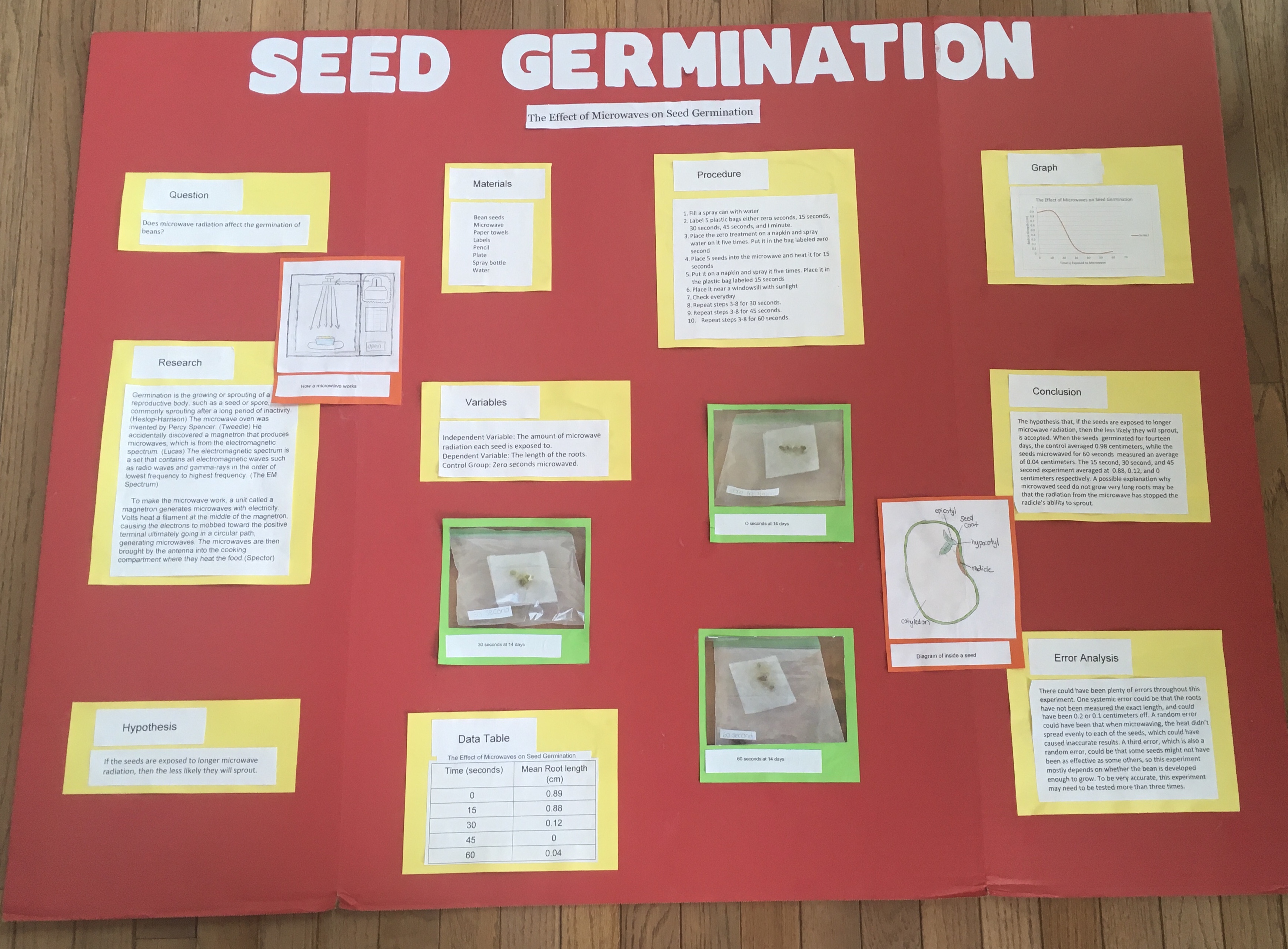The Effect of Microwave Radiation on Seed Germination
Abstract:
The purpose of this experiment was to see if microwave heat can help plants germinatefaster or slower. The hypothesis is, if the seeds are exposed to longer microwave radiation, the the less likely they will sprout. The constants are the type of seeds (mung), the microwave used, amount of water each seed is given, and amount of sunlight. The control is the zero seconds microwaved, the independent variable is the amount of seconds each seed is microwaved, and the dependent variable the length of the roots. The roots were measured bycentimeters using a ruler. It turned out that the control germinatedthe most, and the seeds that were microwaved the longest, 45 and 60 seconds germinated the least.The hypothesis that, if the seeds are exposed to longer microwave radiation, then the less likely they will sprout, is accepted. When the seeds germinated for fourteen days, the control averaged 0.98 centimeters, while the seeds microwaved for 60 seconds measured an average of 0.04 centimeters. The 15 second, 30 second, and 45 second experiment averaged at 0.88, 0.12, and 0 centimeters respectively. A possible explanation why microwaved seeds do not grow very long roots may be that the radiation from the microwave has stopped the radicle’s ability to sprout.
If I redid the experiment, I would do more than three trials, because I would never know if my results were exact.
Bibliography/Citations:
No additional citationsAdditional Project Information
Research Plan:
Title: The Effect of Microwaves on Seed Germination
Question: Do microwaves affect the germination of seeds?
Goal: The goal is to see whether or not if the microwave helps seeds germinate faster or slower. The expected outcome is that it may destroy the radicle.
Hypothesis: If the seeds are exposed to longer microwave radiation, then the less likely they will sprout.
Materials: bean seeds, microwave, paper towels, labels, pencil, plate, spray bottle, water
Procedural Plan:
- Fill a spray can with water
- Label 5 plastic bags either zero seconds, 15 seconds, 30 seconds, 45 seconds, and I minute.
- Place the zero treatment on a napkin and spray water on it five times. Put it in the bag labeled zero second
- Place 5 seeds into the microwave and heat it for 15 seconds
- Put it on a napkin and spray it five times. Place it in the plastic bag labeled 15 seconds
- Place it near a windowsill with sunlight
- Check everyday
- Repeat steps 3-8 for 30 seconds.
- Repeat steps 3-8 for 45 seconds.
- Repeat steps 3-8 for 60 seconds.
Data Analysis: I will check everyday to see if there is any growth. I will measure the growth of each bean with a ruler and record the growth in a chart in my notebook. Once two weeks past, I will average each of the bean groups and draw a line graph.
Risk Analysis: The microwave will be hot; I will need to wear oven mitts when taking the seeds out.
Works Cited:
“The Electromagnetic Spectrum.” Electromagnetic Spectrum, www.geo.mtu.edu/rs/back/spectrum/.
Lucas, Jim. “What Are Microwaves?” LiveScience, Purch, www.livescience.com/50259-microwaves.html.
Photos are all done by experimenter.

